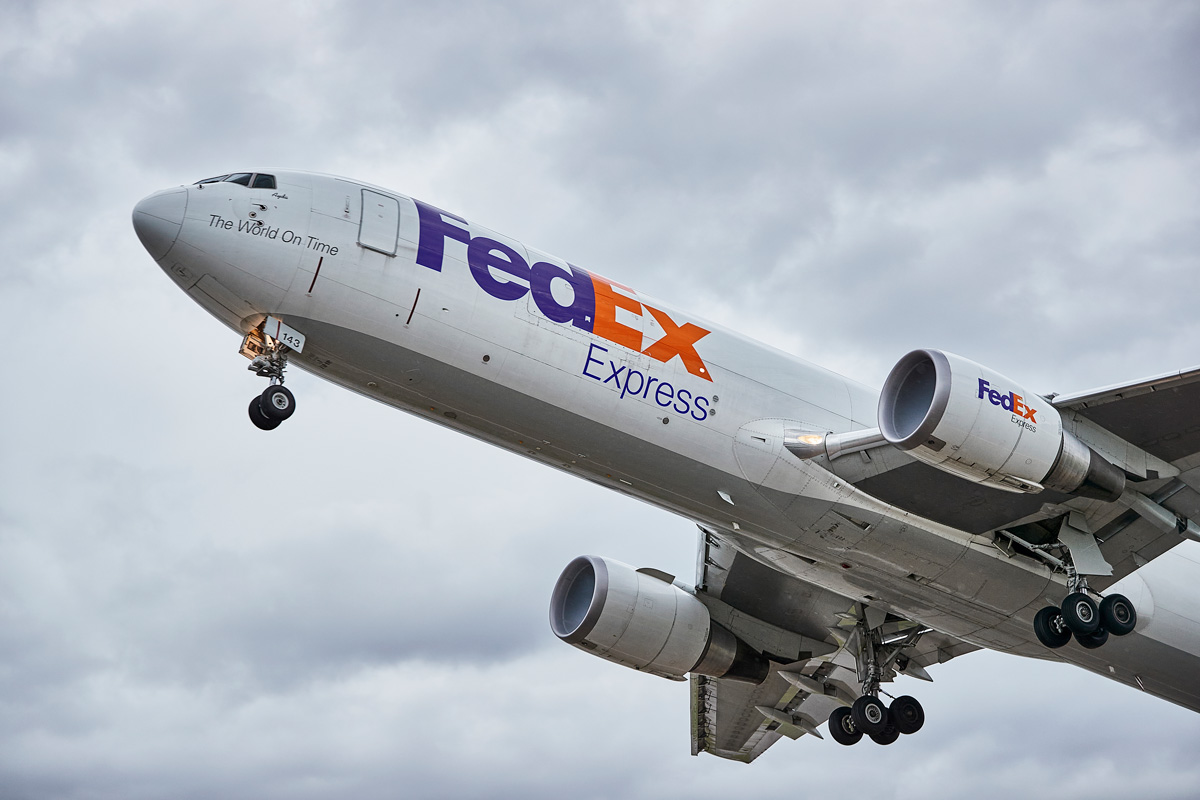Exploring Business Opportunities In The Asia-US Trade Lane
Asia businesses are breaking out beyond their local market to engage in cross-border commerce across Asia. Some small businesses are venturing even further, tapping emerging opportunities in the Asia-US trade lane.
- Small businesses in APAC have big ambitions to expand overseas—but many only focus their expansion plans on the Asia region.
- Beyond trading domestically or within intra-Asia, SMEs can reach further afield to tap opportunities in the dynamic US market.
- By taking advantage of free trade deals, peak shopping seasons, and reliable logistics providers, Asian businesses can seize growth opportunities in Asia-US trade.
Every business owner looking to go global faces a tricky question: which markets should I focus on? Asia’s SMEs are keen to expand across borders—but some look closer to home for their growth ambitions. While more than 80% of businesses in ASEAN and Greater China say they want to expand overseas, 3 in 5 businesses cite ASEAN as their top market for expansion.
At face value, this makes solid business sense. As a growing business, it’s less risky to start off with familiar markets first. With time zone and language barriers, it’s not always easy to do business on the other side of the globe, even in a data-first world. Overcoming the challenges of international cross-border logistics can be daunting, but there are exciting growth pathways to be unlocked with the right strategy and tools.
At face value, this makes solid business sense. As a growing business, it’s less risky to start off with familiar markets first. With time zone and language barriers, it’s not always easy to do business on the other side of the globe, even in a data-first world. Overcoming the challenges of international cross-border logistics can be daunting, but there are exciting growth pathways to be unlocked with the right strategy and tools.
Looking beyond Asia and towards the United States
At FedEx, we’ve always supported small businesses with plans to go beyond borders. Businesses that venture outside their comfort zones to seek customers in new geographies can reap rewards. Beyond trading intra-Asia, SMEs can reach further afield and tap into rich opportunities in markets like Europe and the US.

Multiple trade lanes between Asia and the US are creating possibilities for businesses in both regions. Advancements in logistics, such as near real-time data analytics and automation, are also simplifying access to the US market. By pursuing an intra-Asia and US trade approach, businesses can expand market reach, diversify, and gain a competitive edge.
Right now, the US market is an interesting place for overseas SMEs to do business.
Right now, the US market is an interesting place for overseas SMEs to do business.
Opportunities in the Asia-US trade lane
The US is currently the top export market for ASEAN countries, with exports to the US totaling US$67.2 billion for the first quarter of 2024. The US has been increasing its procurement of semiconductors and electronic parts from ASEAN manufacturers, especially those from Vietnam and Thailand.
This shift not only reflects the US market’s growing importance for ASEAN exporters, but also signals a broader trend of ASEAN countries diversifying their export markets. The recent shipping surges across the Asia-US trade lane highlights a robust exchange of goods and services between the two regions.
The bottom line? US-Asia supply chain opportunities are growing, with more US businesses setting up manufacturing and supply networks here.
Top 5 business tips for Asia-US trade
When considering the possibilities for Asia-US commerce, what are the most important considerations for business owners? Here's a breakdown of the top five:
1. Take advantage of trade deals
The US bolsters economic relationships across Asia through a series of vital trade agreements. Aside from the US-ASEAN trade and investment agreement, the US also has specific free trade agreements with Singapore, South Korea, and Japan.

Key provisions may differ, but these trade deals have one goal in mind: to make it easier for Asia’s SMEs to engage in cross-border commerce with the US. The agreements help reduce or eliminate tariffs on export products, streamline customs procedures and regulatory processes, and unlock market access across borders.
2. Study the market and its regulations
There’s no doubt that the US market is diverse, with consumer preferences and regulatory requirements changing across state lines. Do your homework on cultural norms and business practices in key states to build meaningful relationships with your US-based customers.
Part of studying the US market involves getting to know its complex regulatory landscape. It’s important to familiarize yourself with regulations related to your industry, especially around product safety, labeling, and intellectual property. This helps you avoid legal issues or hefty penalties.
There’s no doubt that the US market is diverse, with consumer preferences and regulatory requirements changing across state lines. Do your homework on cultural norms and business practices in key states to build meaningful relationships with your US-based customers.
Part of studying the US market involves getting to know its complex regulatory landscape. It’s important to familiarize yourself with regulations related to your industry, especially around product safety, labeling, and intellectual property. This helps you avoid legal issues or hefty penalties.
3. Have a clear value proposition
Besides being diverse, the US market is also highly competitive, with several established players and a constant influx of new entrants. You’re competing with over 33 million small businesses based there, together with other exporters and overseas e-commerce traders. With so many companies plying their trade, your business will need to differentiate itself wherever possible.
Besides being diverse, the US market is also highly competitive, with several established players and a constant influx of new entrants. You’re competing with over 33 million small businesses based there, together with other exporters and overseas e-commerce traders. With so many companies plying their trade, your business will need to differentiate itself wherever possible.

Start by identifying your unique selling points (USPs) and tailoring your products to meet the specific needs of US-based customers. Offering niche, artisan product lines and delivering superior customer experience can also help you stand out in this crowded marketplace.
4. Seize opportunities during peak seasons
Peak shopping seasons in the US are getting longer and busier every year. It can start as early as Mother’s Day and Fourth of July, then work its way through Black Friday, Thanksgiving and Christmas. In fact, the 2023 holiday season was the busiest on record, with core retail sales reaching a record US$964.4 billion.
This is good news for APAC businesses. More American shoppers are relying on cross-border e-commerce to purchase gifts and other high-ticket items during peak seasons. In this game, the fastest shipper wins, so make sure you get ahead of the peak season rush. Check out more tips on how to prepare for peak seasons here.
4. Seize opportunities during peak seasons
Peak shopping seasons in the US are getting longer and busier every year. It can start as early as Mother’s Day and Fourth of July, then work its way through Black Friday, Thanksgiving and Christmas. In fact, the 2023 holiday season was the busiest on record, with core retail sales reaching a record US$964.4 billion.
This is good news for APAC businesses. More American shoppers are relying on cross-border e-commerce to purchase gifts and other high-ticket items during peak seasons. In this game, the fastest shipper wins, so make sure you get ahead of the peak season rush. Check out more tips on how to prepare for peak seasons here.
5. Tap the expertise of a reliable logistics provider
The role of logistics in US-Asia trade opportunities is huge—and cross-border logistics can make or break your global ambitions. To unlock the full potential of international commerce, you’ll need increased support in logistics and supply chain management. For APAC SMEs with limited budgets, partnerships may be the answer.
Working with reliable logistics providers allows you to leverage their technology solutions to streamline your supply chains and deliver on time. For example, the Chinese e-tailer Worthfind broke into the US market and expanded into a global brand by leaning on FedEx’s global reach and reliability.
Service enhancements from logistics providers also strengthen connectivity between Asia and the US. FedEx, for example, has expanded its International Connect Plus service, offering faster and more reliable delivery options to support cross-border e-commerce from Asia to the US.
In the past, US-Asia trade logistics have faced challenges due to fluctuating trade dynamics and geopolitical factors. But both regions recognize the value of doing business and removing barriers.
The role of logistics in US-Asia trade opportunities is huge—and cross-border logistics can make or break your global ambitions. To unlock the full potential of international commerce, you’ll need increased support in logistics and supply chain management. For APAC SMEs with limited budgets, partnerships may be the answer.
Working with reliable logistics providers allows you to leverage their technology solutions to streamline your supply chains and deliver on time. For example, the Chinese e-tailer Worthfind broke into the US market and expanded into a global brand by leaning on FedEx’s global reach and reliability.
Service enhancements from logistics providers also strengthen connectivity between Asia and the US. FedEx, for example, has expanded its International Connect Plus service, offering faster and more reliable delivery options to support cross-border e-commerce from Asia to the US.
In the past, US-Asia trade logistics have faced challenges due to fluctuating trade dynamics and geopolitical factors. But both regions recognize the value of doing business and removing barriers.

With the launch of two new FedEx flights between China and the US, we’ve increased air cargo capacity and improved transit times, helping connect SMEs to major US trade hubs a day faster. These service enhancements demonstrate our commitment to supporting the growth of Asia-US trade, empowering businesses to seize opportunities in this dynamic market.
Ready to take on the US market?
Asia-US trade continues to adapt in the face of rapid change. From leveraging trade deals to working with logistics providers that help foster cross-border growth, it’s an exciting time to be going global as a small business. SMEs need to be savvy, leaning on digital tools and solutions to optimize every part of their business.
With a global-looking, data-driven strategy for cross-border growth, you’ll be ready to take on new markets armed with insights and the support of a strong, stable supply chain.
***


















 The Latest
The Latest